Test your knowledge about some of the world’s most vulnerable animals and the challenges they face. This quiz covers a range of species from different habitats around the globe, highlighting the diverse threats to wildlife and the urgent need for conservation efforts.
1. Which of these big cats is considered critically endangered?
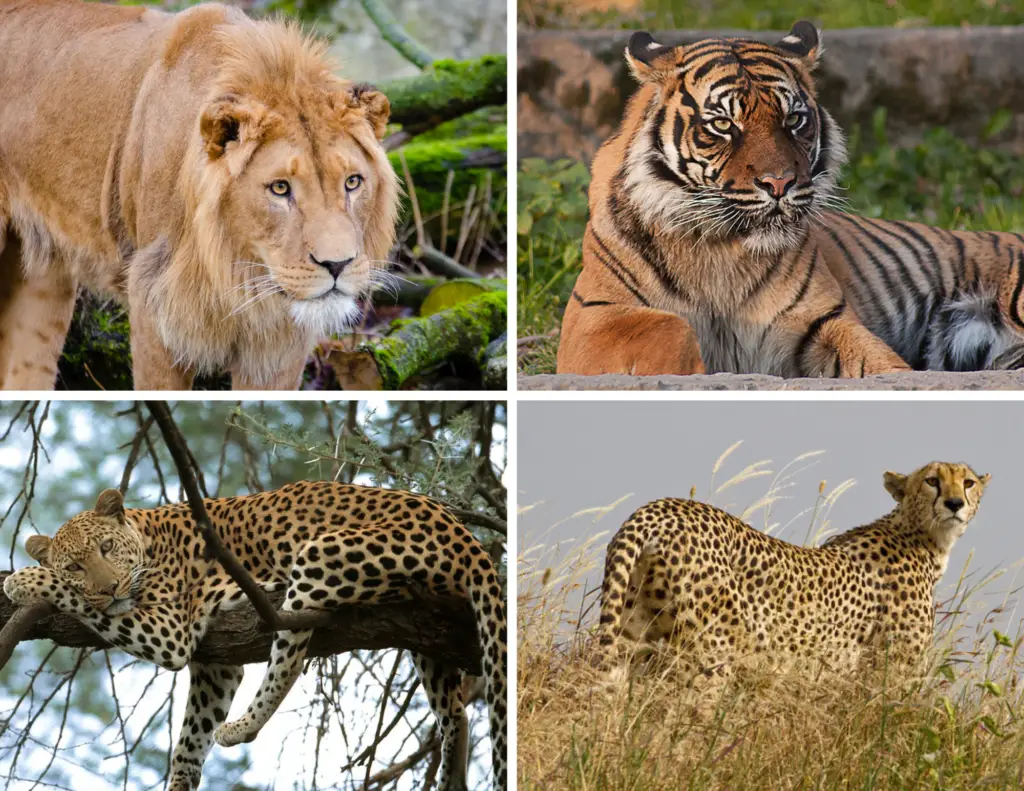
The conservation status of big cats is a major concern for wildlife biologists and conservationists. These apex predators play crucial roles in their ecosystems, and their decline can have far-reaching effects on biodiversity. Understanding which species are most at risk is key to directing conservation efforts effectively.
A) Lion
B) Tiger
C) Leopard
D) Cheetah
Answer:
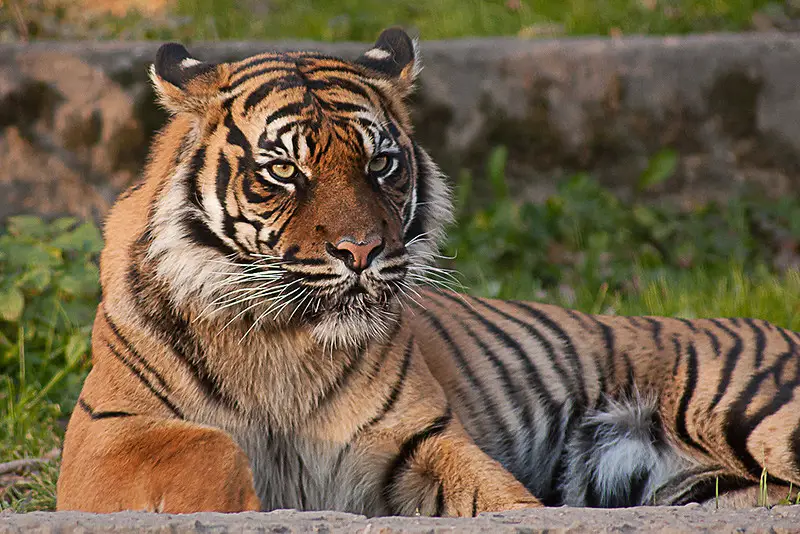
The correct answer is B) Tiger. While all of these big cats face conservation challenges, the tiger is considered critically endangered. There are estimated to be fewer than 4,000 tigers left in the wild, with some subspecies already extinct.
Tigers face numerous threats, including habitat loss due to deforestation and human encroachment, poaching for their skins and body parts used in traditional medicine, and human-wildlife conflict. Conservation efforts include protected areas, anti-poaching measures, and programs to reduce human-tiger conflict. Some tiger populations have shown signs of recovery in recent years, demonstrating the potential success of dedicated conservation efforts.
2. What is the primary threat to the survival of sea turtles?
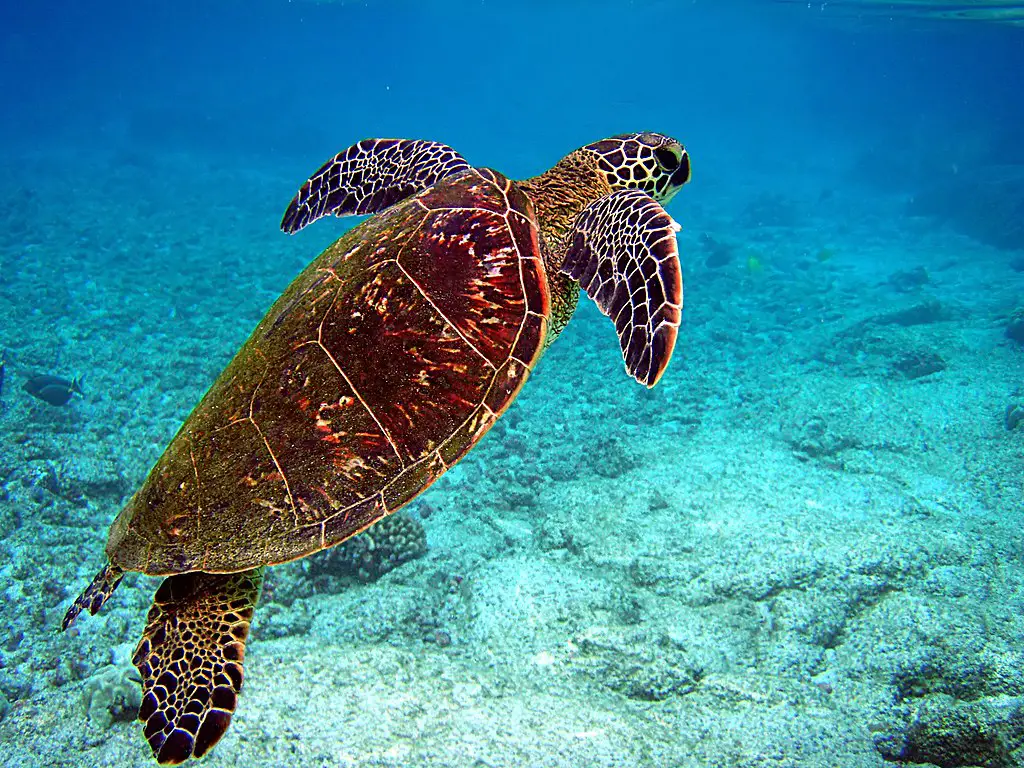
Sea turtles have existed for over 100 million years, surviving the extinction of dinosaurs. However, they now face numerous human-induced threats. Understanding these threats is crucial for developing effective conservation strategies to protect these ancient marine reptiles.
A) Climate change
B) Plastic pollution
C) Overfishing
D) All of the above
Answer:
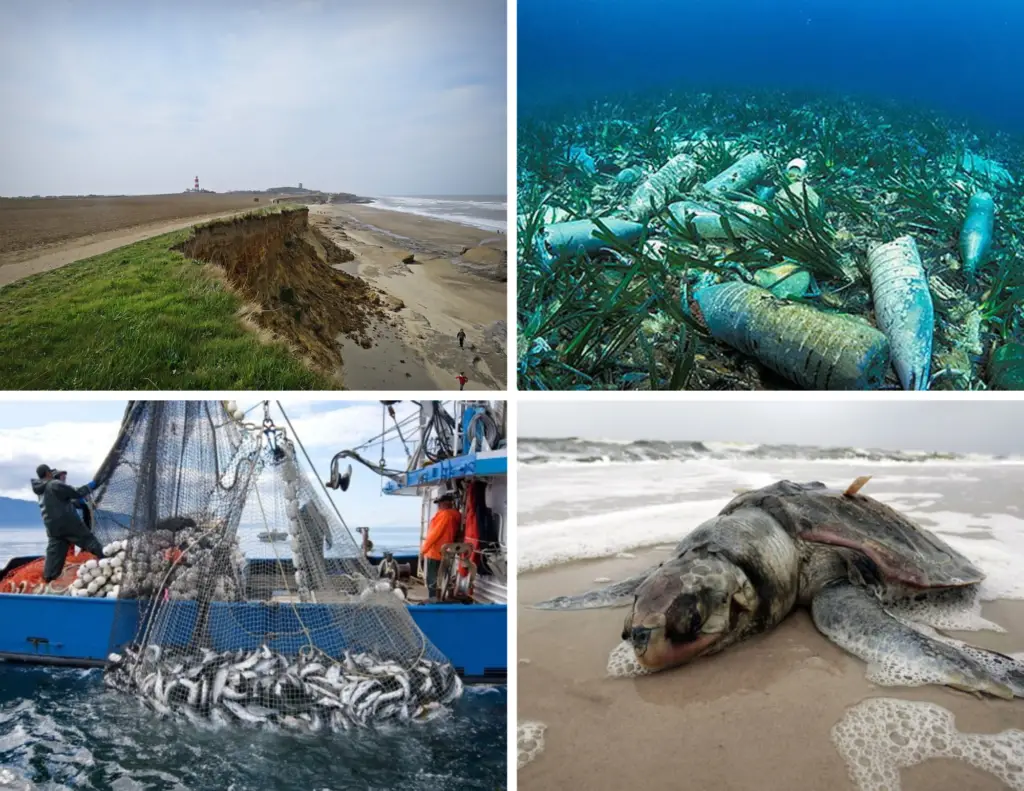
The correct answer is D) All of the above. Sea turtles face multiple significant threats, including climate change, plastic pollution, and overfishing, among others.
Climate change affects sea turtle nesting beaches and alters ocean currents, impacting migration patterns. Plastic pollution in oceans is often mistaken for food by sea turtles, leading to malnutrition and death. Overfishing not only depletes sea turtle food sources but also results in many turtles being caught as bycatch in fishing nets. Additional threats include coastal development destroying nesting habitats, light pollution disorienting hatchlings, and illegal harvesting of eggs and adults. Conservation efforts include protected nesting beaches, fishing gear modifications, and public education programs.
3. Which of these primates is not considered endangered?
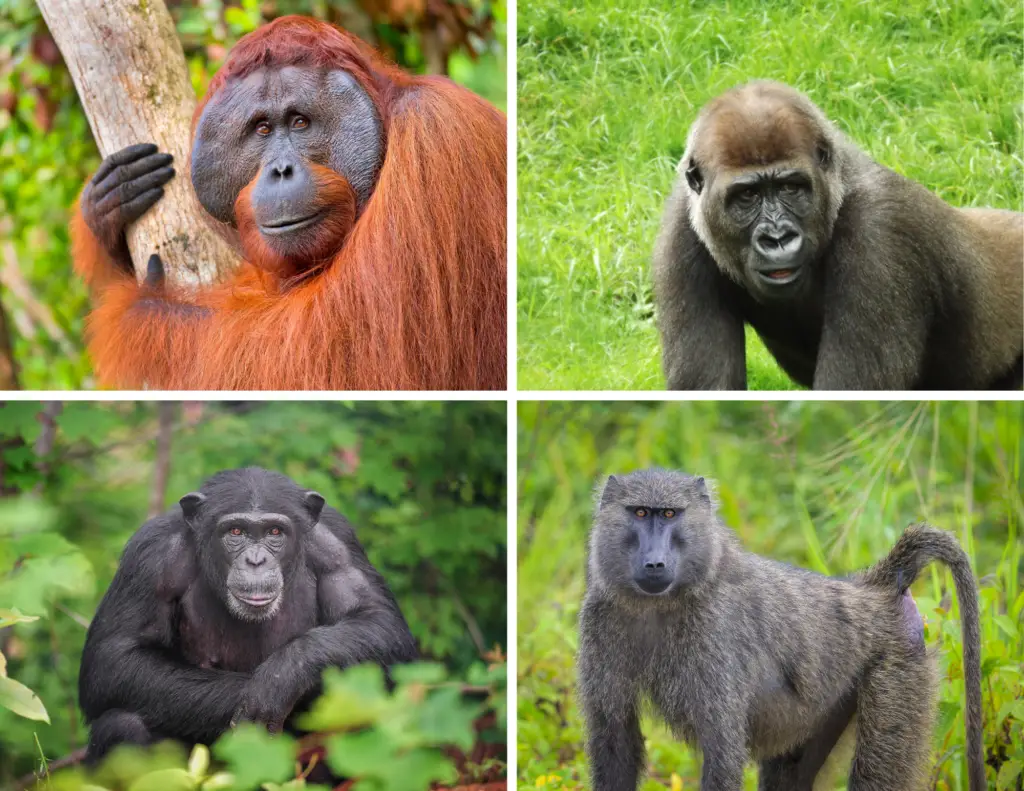
Primates, our closest animal relatives, are facing unprecedented threats in the wild. Many species are on the brink of extinction due to human activities. This question helps differentiate between the conservation statuses of various primate species, highlighting the varying degrees of threat they face.
A) Orangutan
B) Gorilla
C) Chimpanzee
D) Baboon
Answer:
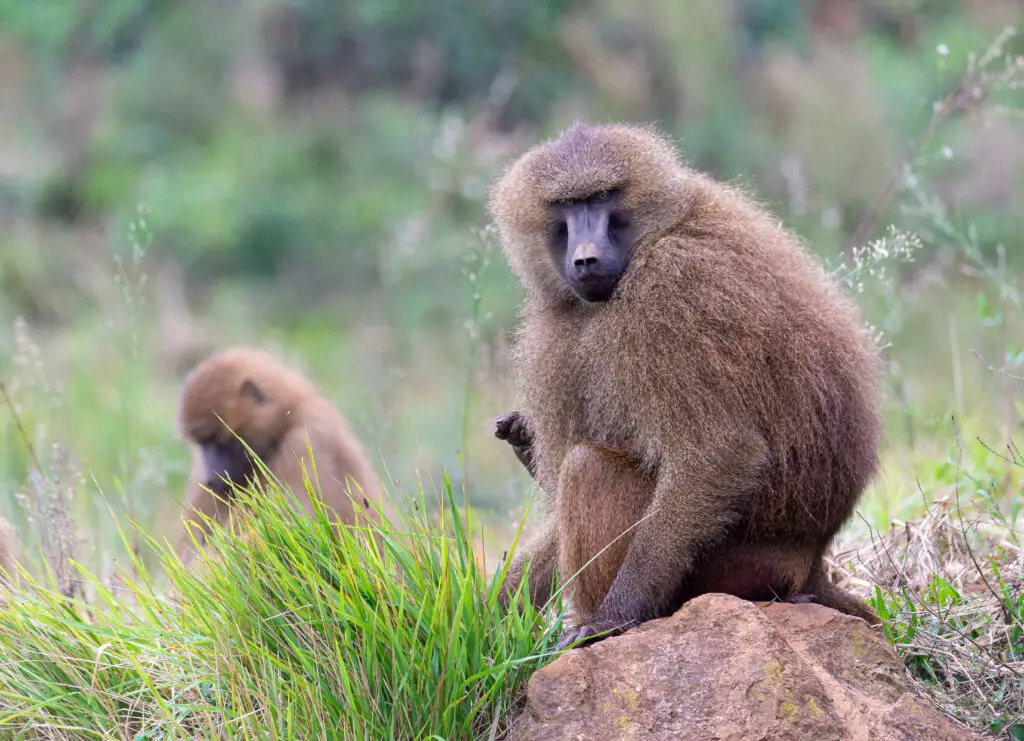
The correct answer is D) Baboon. While many primate species are endangered, most baboon species are listed as Least Concern on the IUCN Red List. Orangutans, gorillas, and chimpanzees are all considered endangered or critically endangered.
Baboons are more adaptable to different habitats and can thrive in areas with human presence, unlike many other primates. However, orangutans, gorillas, and chimpanzees face severe threats from habitat loss, poaching, and disease. These great apes have slower reproductive rates and more specific habitat requirements, making them more vulnerable to extinction. Conservation efforts for endangered primates include habitat protection, anti-poaching measures, and captive breeding programs.
4. What is the estimated number of northern white rhinos left in the wild?
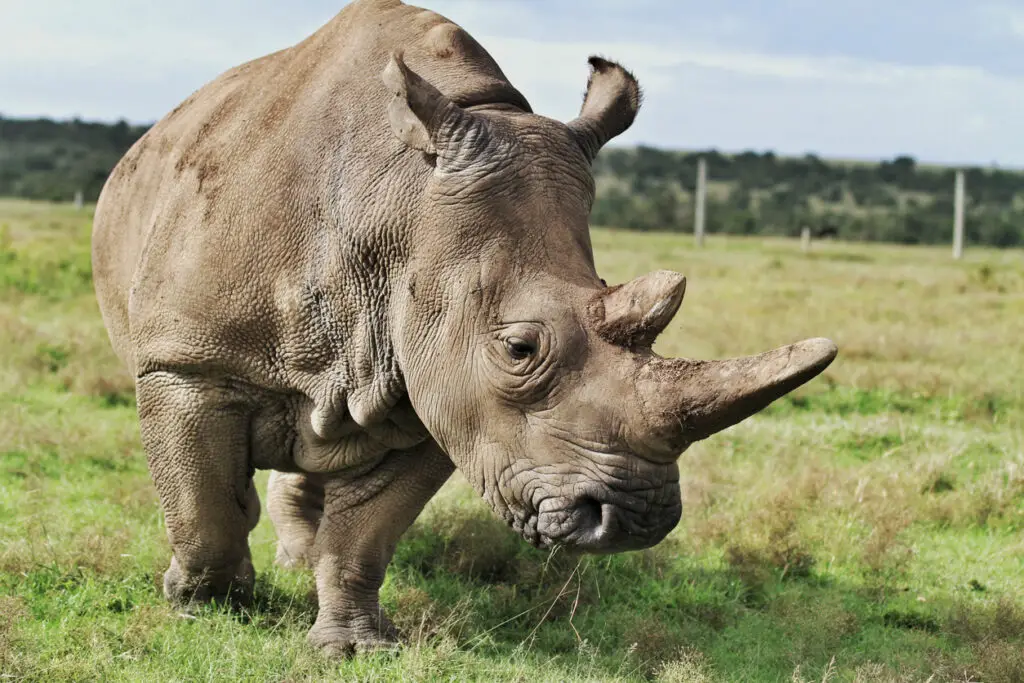
The northern white rhinoceros is one of the most endangered animals on Earth, highlighting the extreme risk of extinction faced by some species. This question underscores the critical state of certain animal populations and the urgent need for conservation intervention.
A) About 100
B) About 50
C) About 10
D) 0
Answer:
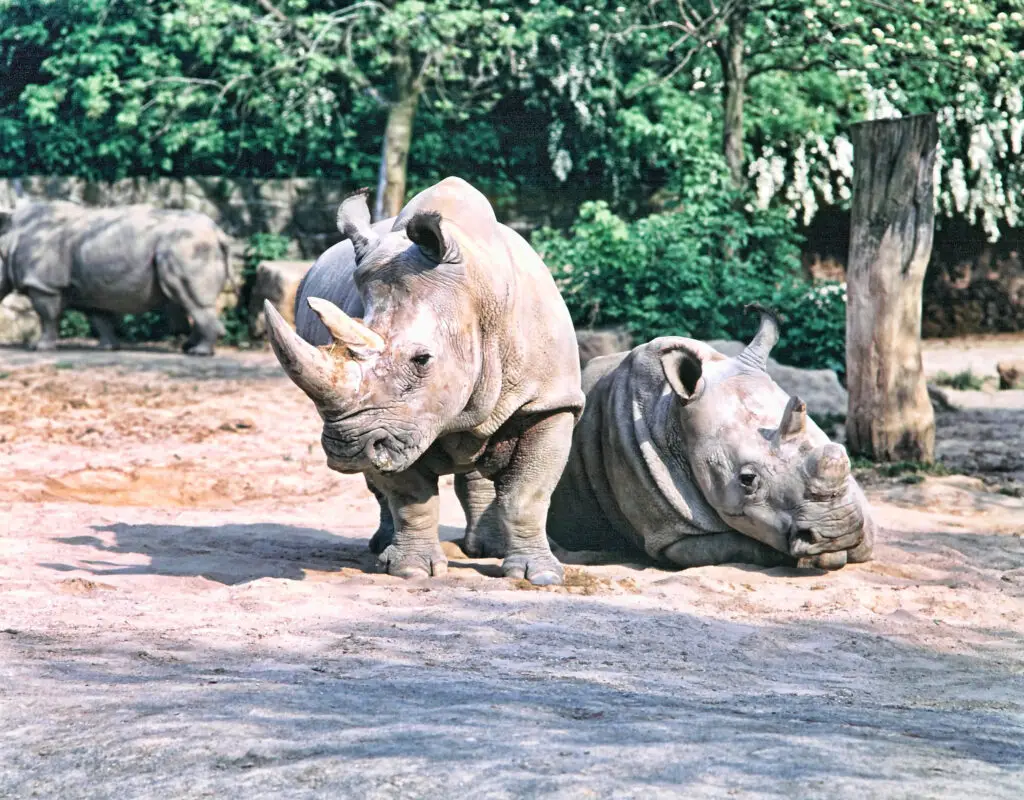
The correct answer is D) 0. There are no northern white rhinos left in the wild. As of 2021, only two northern white rhinos remain in existence, both female, living under 24-hour guard in Kenya.
The last male northern white rhino, named Sudan, died in 2018. The species was driven to near-extinction primarily due to poaching for their horns, which are valued in traditional medicine despite having no proven medicinal properties. Scientists are now attempting to save the subspecies through advanced reproductive technologies, including in vitro fertilization using stored sperm from deceased males and eggs from the remaining females. This case demonstrates the extreme consequences of unchecked poaching and the lengths conservationists must go to save species on the brink of extinction.
5. Which of these factors is NOT a major cause of species endangerment?
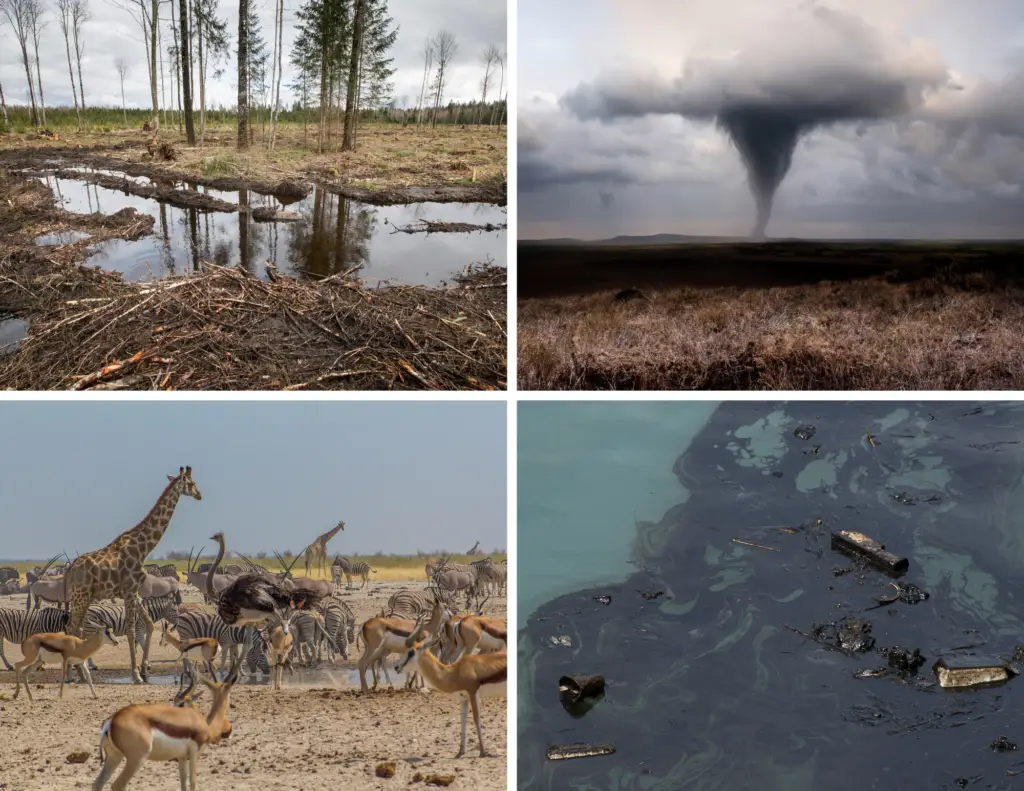
Understanding the causes of species endangerment is crucial for developing effective conservation strategies. While many factors contribute to the decline of species, some are more significant than others. This question helps clarify the primary threats facing endangered species today.
A) Habitat loss
B) Climate change
C) Natural predation
D) Pollution
Answer:
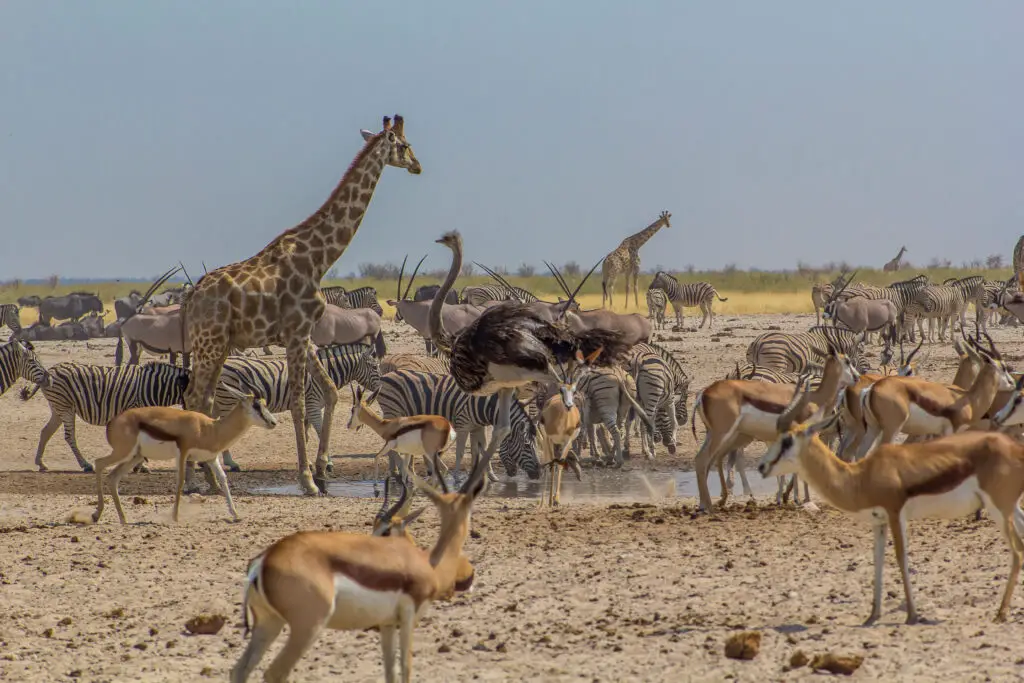
The correct answer is C) Natural predation. While natural predation is a normal part of ecosystem dynamics, it is not typically a major cause of species endangerment in modern times.
Habitat loss, climate change, and pollution are all significant human-induced factors leading to species endangerment. Habitat loss, often due to deforestation, urbanization, and agricultural expansion, is considered the primary threat to biodiversity worldwide. Climate change is altering ecosystems faster than many species can adapt, affecting migration patterns, breeding cycles, and food availability. Pollution, including plastic waste, chemical runoff, and air pollution, degrades habitats and directly harms wildlife. Natural predation, while it can affect population dynamics, rarely leads to endangerment unless combined with these human-caused factors that weaken species’ resilience.
6. Which of these marine mammals is considered critically endangered?
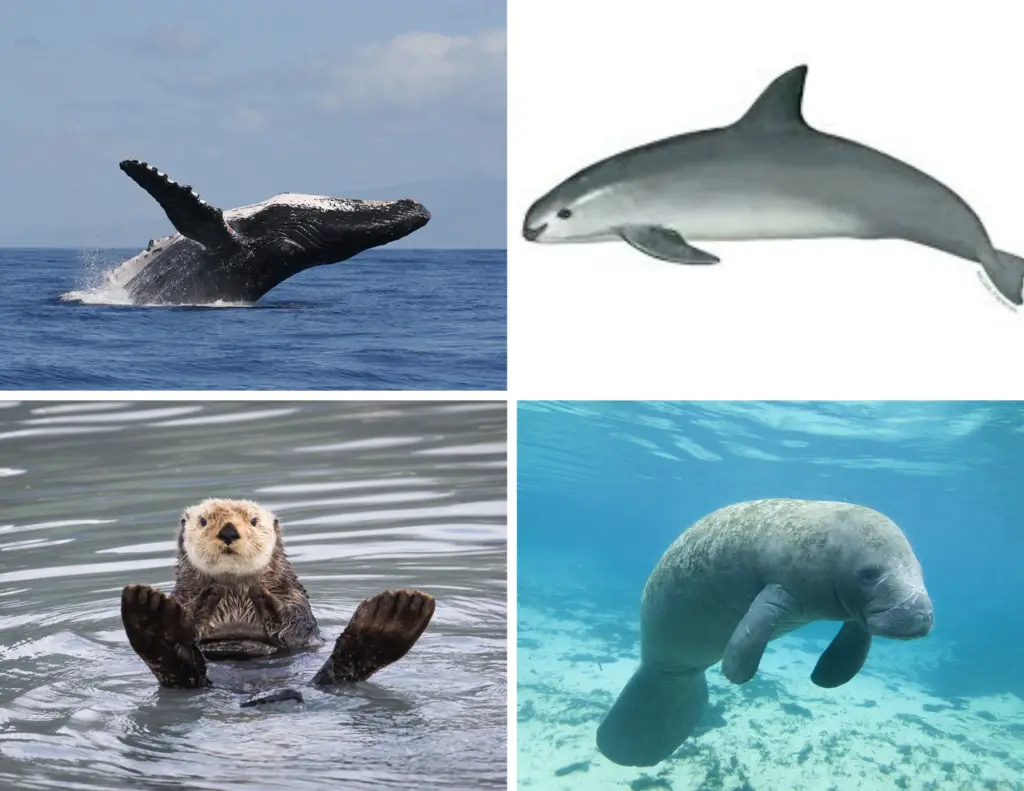
Marine mammals face unique challenges in the world’s oceans, from pollution to overfishing. Some species are more vulnerable than others due to their specific life histories, habitats, or interactions with human activities. This question highlights one of the most endangered marine mammals, drawing attention to the urgent conservation needs in our oceans.
A) Humpback whale
B) Vaquita
C) Sea otter
D) Manatee
Answer:
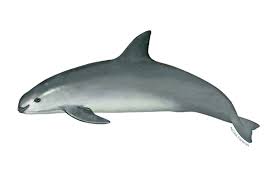
The correct answer is B) Vaquita. The vaquita, a small porpoise found only in the Gulf of California, is considered the most endangered marine mammal in the world.
As of 2021, it’s estimated that fewer than 20 vaquitas remain in the wild. Their population has been decimated primarily due to accidental entanglement in gillnets used for fishing, particularly those set illegally for the totoaba, another endangered fish whose swim bladder is highly valued in traditional Chinese medicine. Conservation efforts include a ban on gillnet fishing in vaquita habitat, increased enforcement against illegal fishing, and attempts to capture and breed vaquitas in captivity. However, these efforts have had limited success so far, and the species remains on the brink of extinction.
7. Which country is home to the critically endangered Sumatran orangutan?

Knowing the geographic distribution of endangered species is crucial for targeted conservation efforts. This question focuses on one of the world’s most endangered great apes and its specific habitat, highlighting the importance of protecting particular regions for species conservation.
A) Malaysia
B) Indonesia
C) Thailand
D) Philippines
Answer:
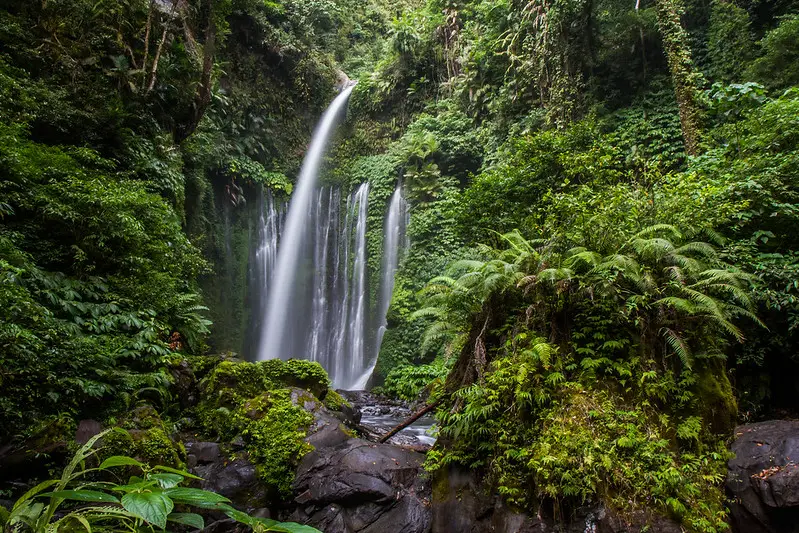
The correct answer is B) Indonesia. The Sumatran orangutan is native to the island of Sumatra in Indonesia.
Sumatran orangutans are critically endangered, with only about 14,000 individuals remaining in the wild. Their population has declined by over 80% in the past 75 years, primarily due to habitat loss from deforestation for palm oil plantations, logging, and human settlement. Climate change and the illegal pet trade also pose significant threats. Conservation efforts include habitat protection, rehabilitation of rescued orangutans, and sustainable development initiatives to reduce deforestation. The survival of Sumatran orangutans is closely tied to the preservation of Sumatra’s rainforests, making their conservation a priority for both species and ecosystem protection.
8. What is the primary threat to the survival of African elephants?
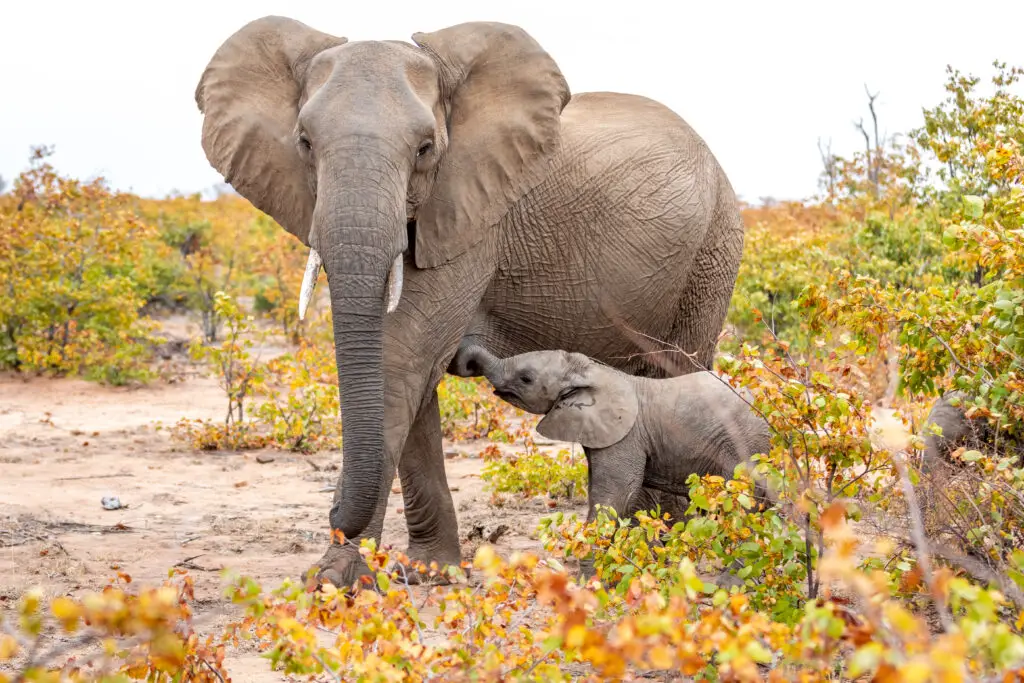
African elephants, the largest land animals on Earth, face numerous threats in the wild. Understanding the most significant danger to their survival is crucial for directing conservation efforts effectively. This question addresses one of the most pressing issues in wildlife conservation today.
A) Habitat loss
B) Poaching
C) Human-elephant conflict
D) Disease
Answer:
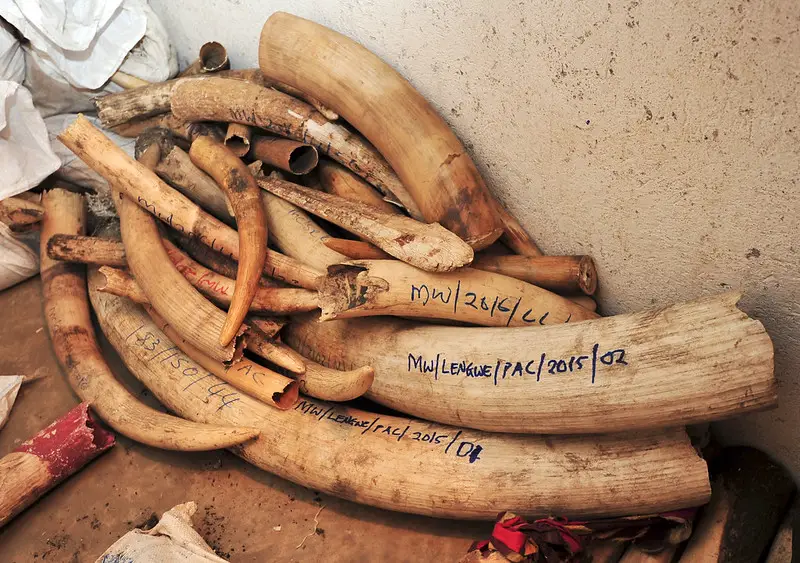
The correct answer is B) Poaching. While African elephants face multiple threats, poaching for ivory remains the primary danger to their survival.
Despite an international ban on ivory trade, demand for elephant tusks remains high in some parts of the world, driving illegal poaching. It’s estimated that tens of thousands of elephants are killed each year for their ivory. This has led to rapid population declines, particularly in Central and East Africa. While habitat loss and human-elephant conflict are also significant issues, they are generally considered secondary to the immediate threat of poaching. Conservation efforts include anti-poaching patrols, ivory trade bans, demand reduction campaigns in consumer countries, and community-based conservation programs to incentivize elephant protection.
9. Which of these insects is listed as endangered?
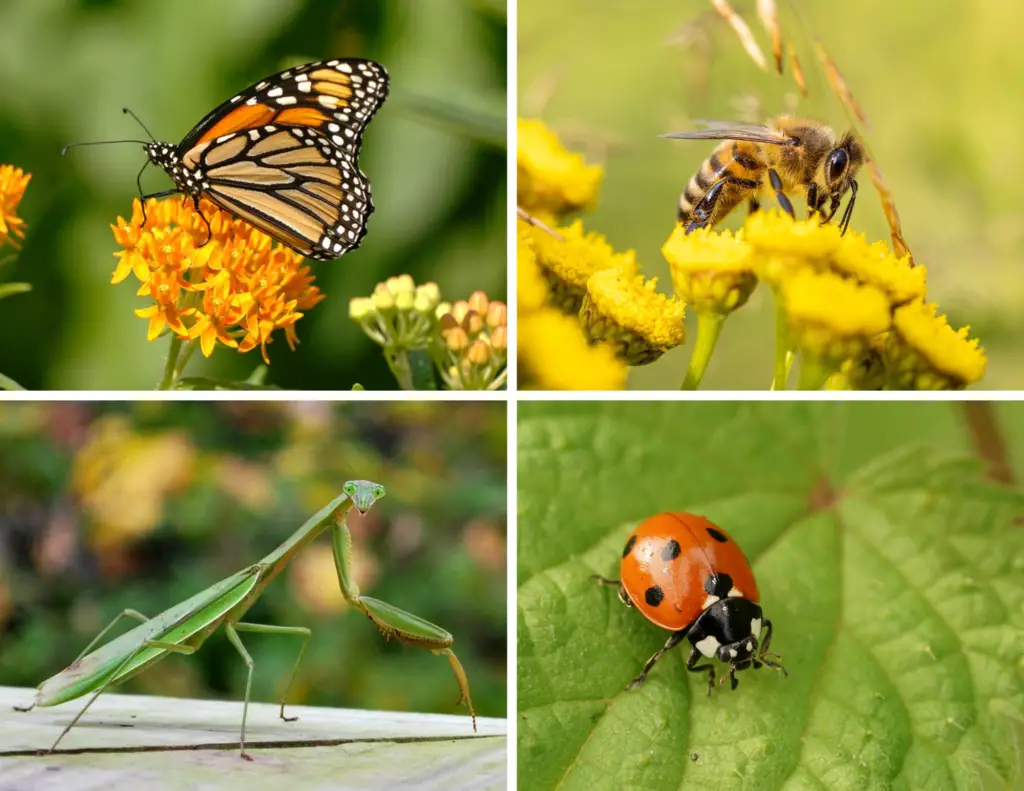
Insects play crucial roles in ecosystems as pollinators, decomposers, and food sources for other animals. However, insect conservation often receives less attention than that of larger, more charismatic species. This question highlights the fact that even small creatures can face significant threats to their survival.
A) Monarch butterfly
B) Honeybee
C) Praying mantis
D) Ladybug
Answer:
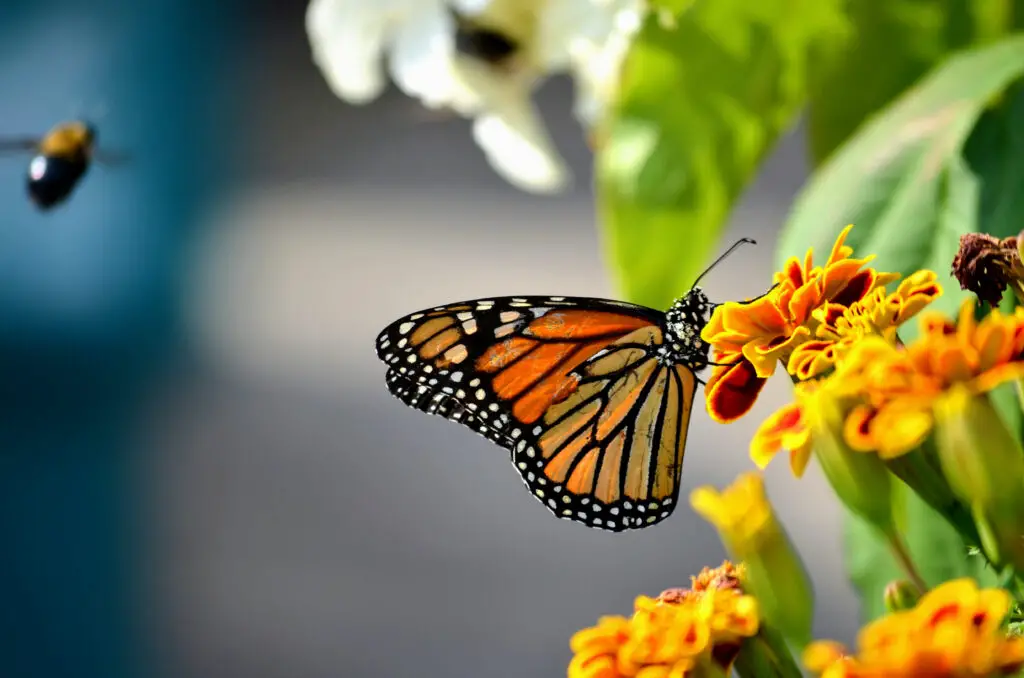
The correct answer is A) Monarch butterfly. The migratory monarch butterfly was added to the IUCN Red List as endangered in 2022.
Monarch butterflies are known for their extraordinary multi-generational migration across North America. Their population has declined by 80-90% in recent decades due to various factors, including habitat loss, pesticide use, climate change, and the decline of milkweed plants, which monarch caterpillars rely on for food. Conservation efforts include planting milkweed and nectar plants, reducing pesticide use, and protecting overwintering sites in Mexico and California. The endangered status of monarchs highlights the broader issue of declining insect populations worldwide, often referred to as the “insect apocalypse,” which could have far-reaching consequences for ecosystems and food security.
10. Which of these amphibians is NOT considered endangered?
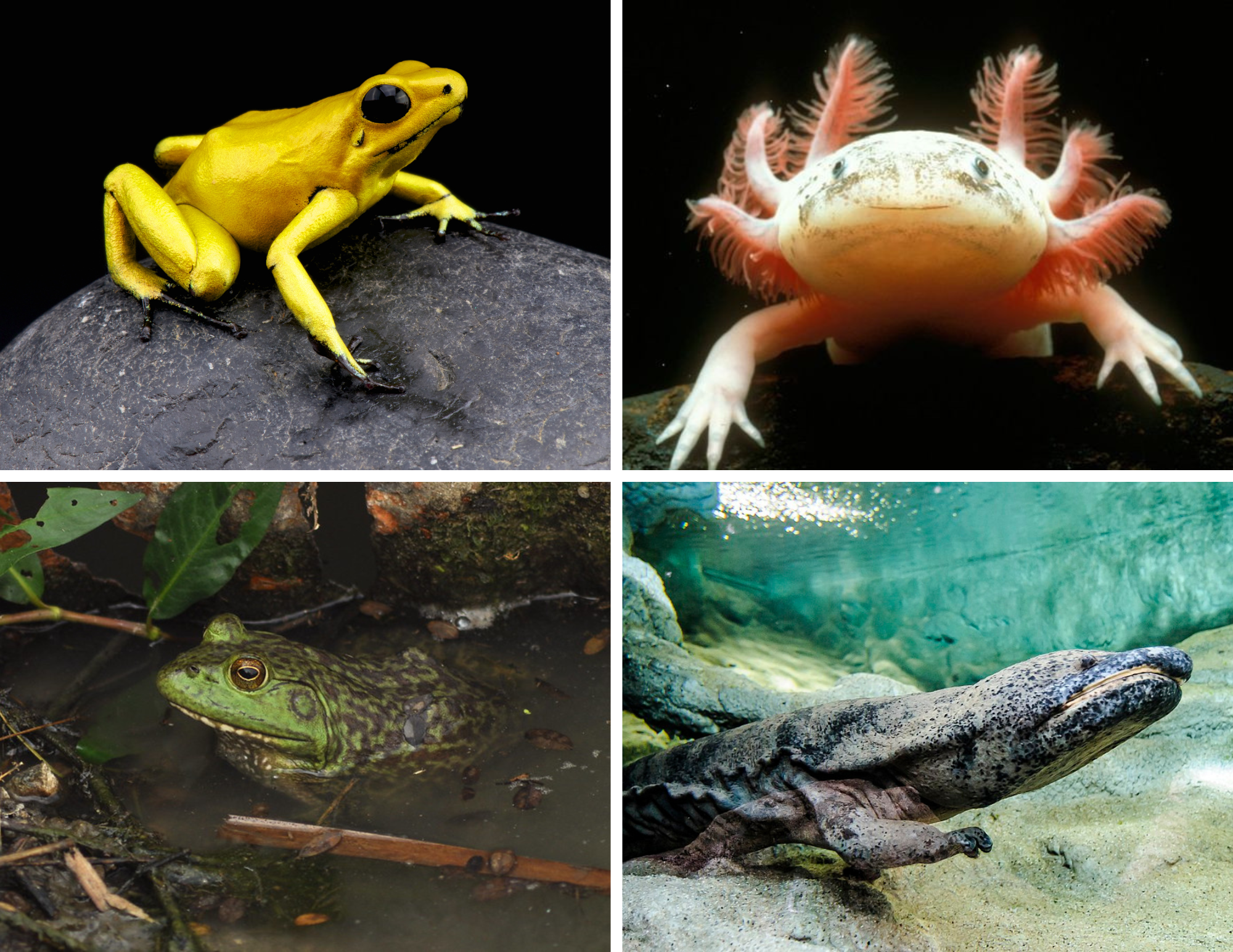
Amphibians are often considered indicator species, reflecting the health of their ecosystems. Many amphibian species are facing rapid declines worldwide, making them a major focus of conservation efforts. This question helps distinguish between the conservation statuses of different amphibian species.
A) Golden poison frog
B) Axolotl
C) American bullfrog
D) Chinese giant salamander
Answer:
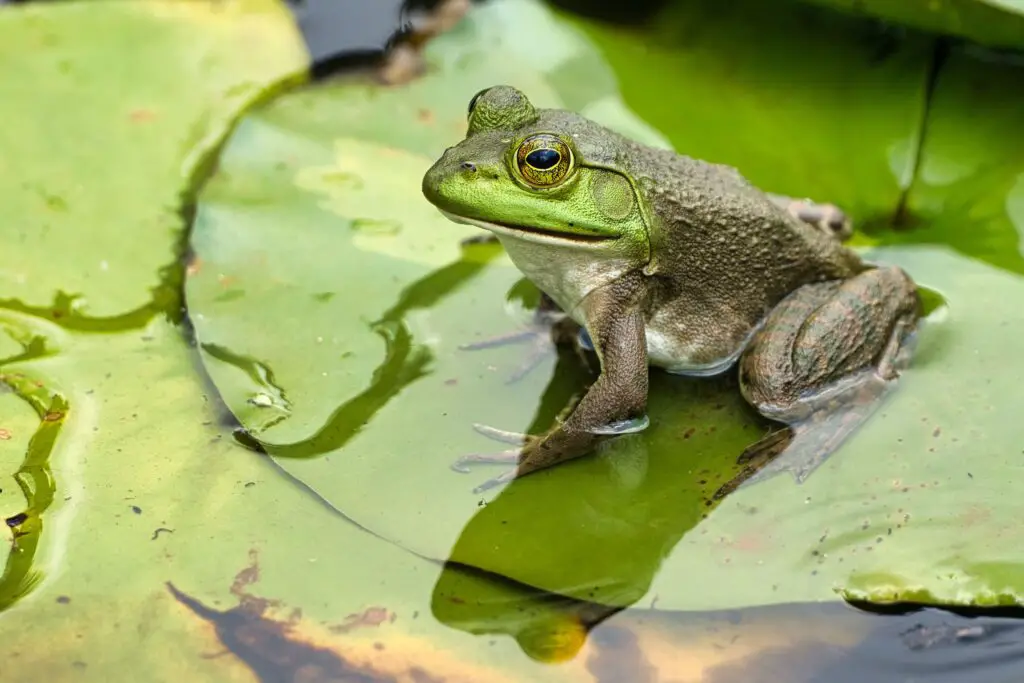
The correct answer is C) American bullfrog. Unlike the other species listed, the American bullfrog is not considered endangered and is actually often viewed as an invasive species in many parts of the world.
The golden poison frog, axolotl, and Chinese giant salamander are all endangered or critically endangered. These species face threats from habitat loss, pollution, climate change, and in some cases, collection for the pet trade or traditional medicine. The American bullfrog, on the other hand, is highly adaptable and has been introduced to many regions outside its native range, where it can outcompete native amphibian species. This contrast highlights how some species can thrive and even become problematic in new environments, while others struggle to survive in their native habitats due to human-induced changes.
11. What is the primary threat to the survival of polar bears?
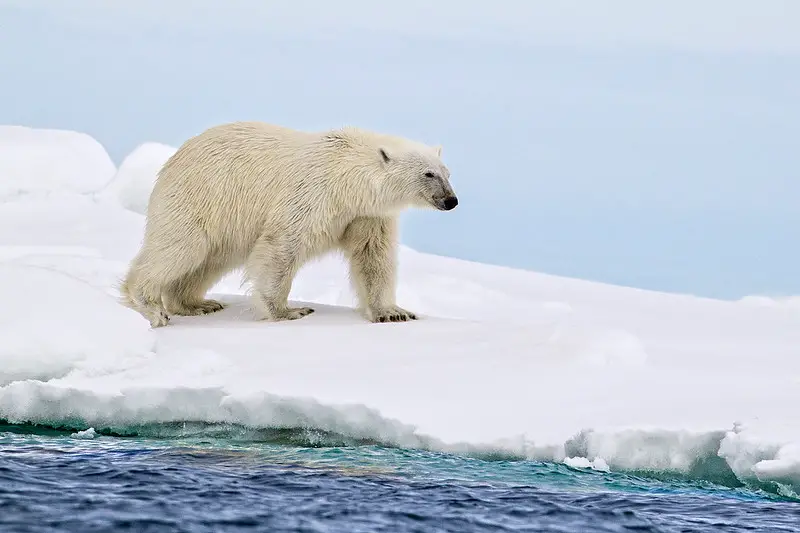
Polar bears have become an iconic symbol of climate change impacts on wildlife. Understanding the specific challenges faced by these Arctic predators is crucial for appreciating the far-reaching effects of global environmental changes. This question addresses the most significant factor affecting polar bear populations.
A) Overhunting
B) Climate change
C) Pollution
D) Disease
Answer:
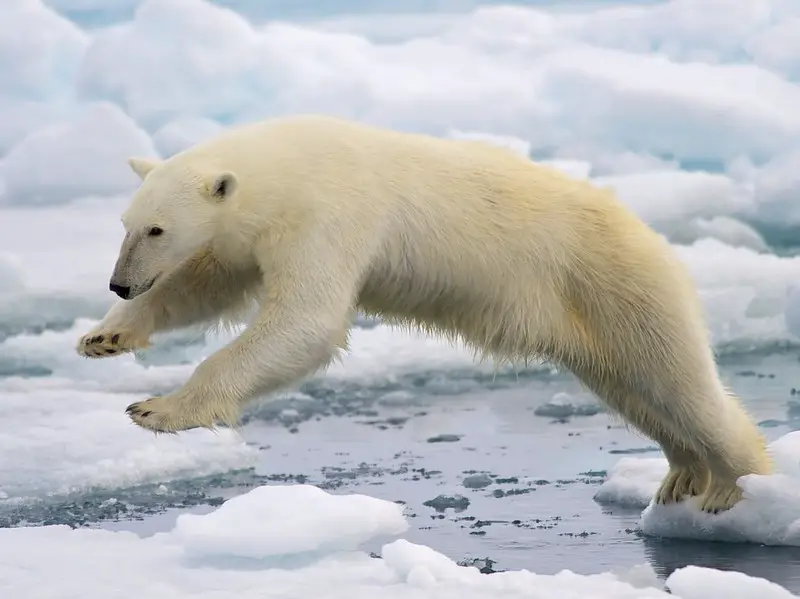
The correct answer is B) Climate change. While polar bears face multiple threats, climate change is considered the primary and most urgent threat to their survival.
Rising global temperatures are causing Arctic sea ice to melt earlier in spring and form later in autumn, reducing the amount of time polar bears have to hunt their primary prey, seals. As the ice-free period lengthens, bears are forced to spend more time on land, where they have limited access to food. This leads to declining body condition, lower reproductive rates, and increased human-bear conflicts as hungry bears approach human settlements. While pollution (particularly from persistent organic pollutants) and past overhunting have affected polar bear populations, the rapid loss of sea ice habitat due to climate change is the most critical and challenging threat to address. Conservation efforts focus on global climate change mitigation as well as local measures to reduce human-bear conflicts and protect critical habitat.
12. Which of these birds is considered extinct in the wild?
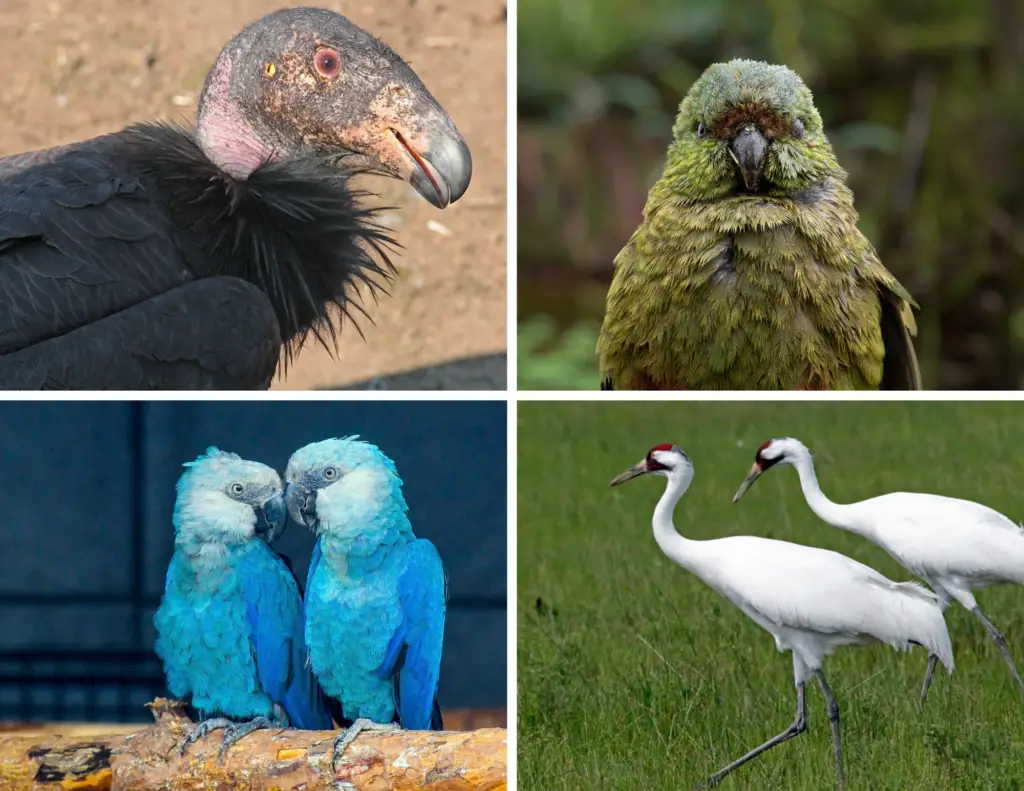
The concept of ‘extinct in the wild’ highlights species that no longer exist in their natural habitat but survive only in captivity. This status represents a critical stage in conservation, where reintroduction efforts become the last hope for a species’ survival in the wild. This question brings attention to one such species, emphasizing the extreme conservation measures sometimes necessary to prevent total extinction.
A) California condor
B) Kakapo
C) Spix’s macaw
D) Whooping crane
Answer:
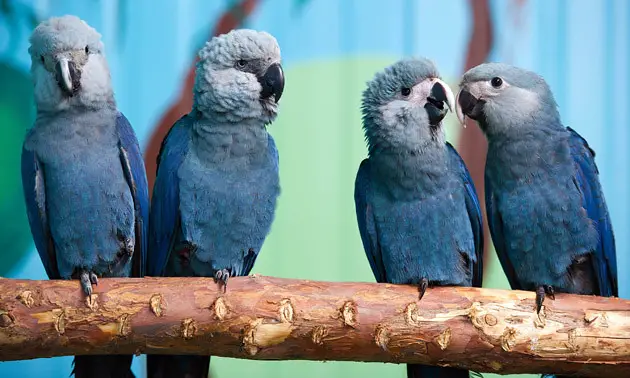
The correct answer is C) Spix’s macaw. As of 2000, the Spix’s macaw has been considered extinct in the wild, with the last known wild individual disappearing that year.
Native to Brazil, the Spix’s macaw was driven to extinction in the wild primarily due to habitat loss and illegal trapping for the pet trade. However, a small population survives in captivity, and there are ongoing efforts to reintroduce the species to its native habitat. In 2018, a group of Spix’s macaws was transported to Brazil for acclimatization, with plans for future release. This case illustrates both the devastating impact human activities can have on species and the potential for captive breeding and reintroduction programs to offer a second chance for species on the brink of total extinction.
13. Which of these marine animals is threatened primarily by the aquarium trade?
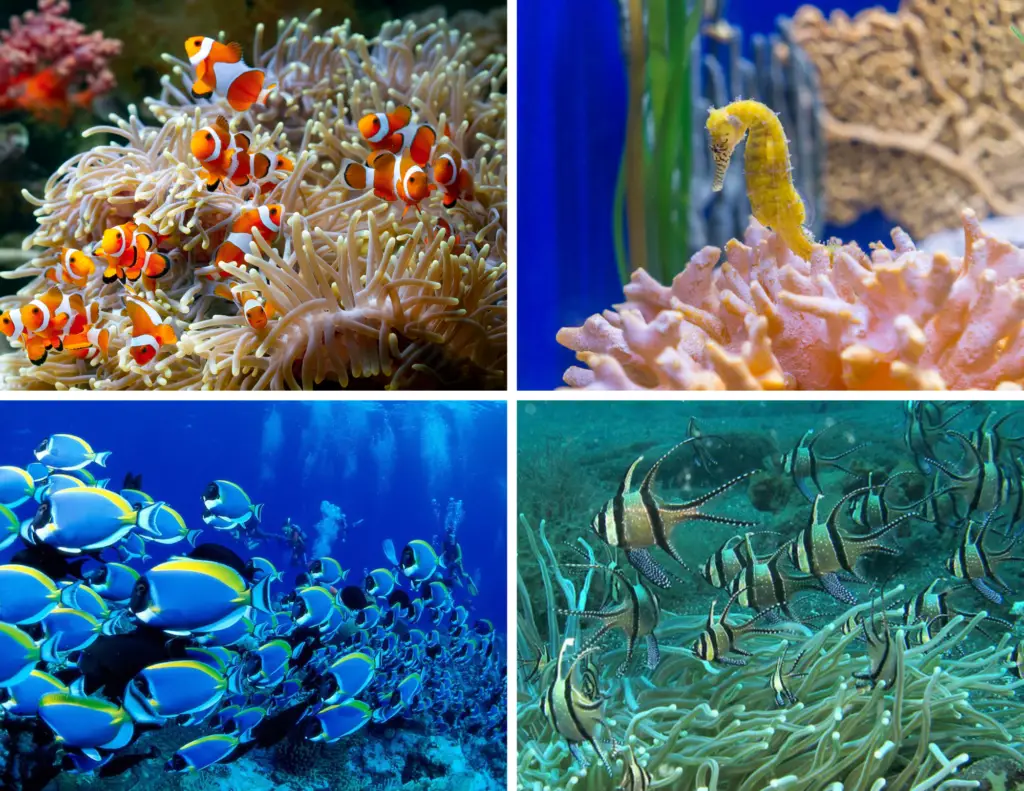
The aquarium trade can have significant impacts on wild populations of marine species. While many aquarium fish are now captive-bred, some species are still primarily sourced from the wild, leading to conservation concerns. This question highlights a species that has been particularly affected by collection for the aquarium industry.
A) Clownfish
B) Seahorse
C) Blue tangBanggai
D) Banggai Cardinalfish
Answer:
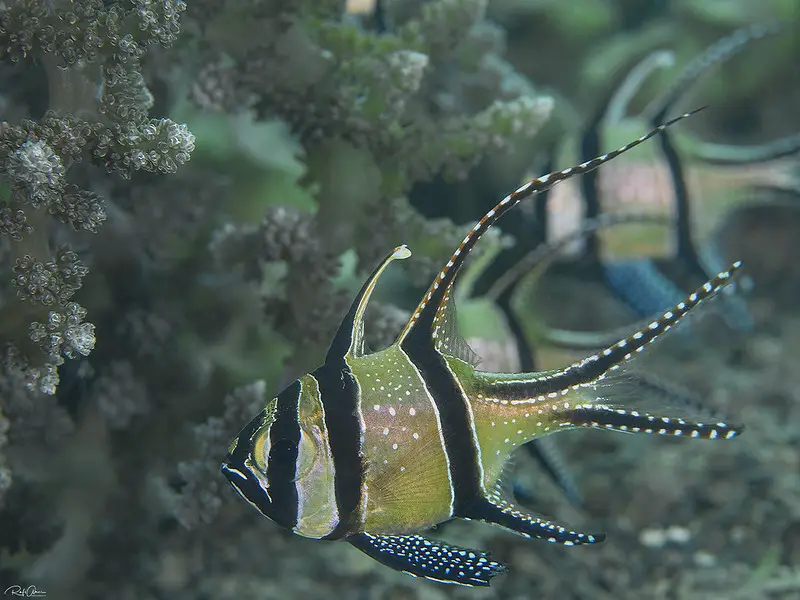
The correct answer is D) Banggai cardinalfish. While all of these species are impacted by the aquarium trade to some degree, the Banggai cardinalfish is considered particularly threatened by this industry.
Endemic to a small region in Indonesia, the Banggai cardinalfish has a very limited natural range and low reproductive rate, making it especially vulnerable to overharvesting. Unlike many other aquarium fish, Banggai cardinalfish are almost exclusively wild-caught, leading to significant population declines. The species is now listed as endangered on the IUCN Red List. Conservation efforts include attempts to establish captive breeding programs, marine protected areas in their native range, and regulations on collection and trade. This case highlights the need for sustainable practices in the aquarium trade and the importance of considering a species’ life history and range when assessing its vulnerability to exploitation.
14. Which of these factors is NOT typically considered a major threat to endangered species?
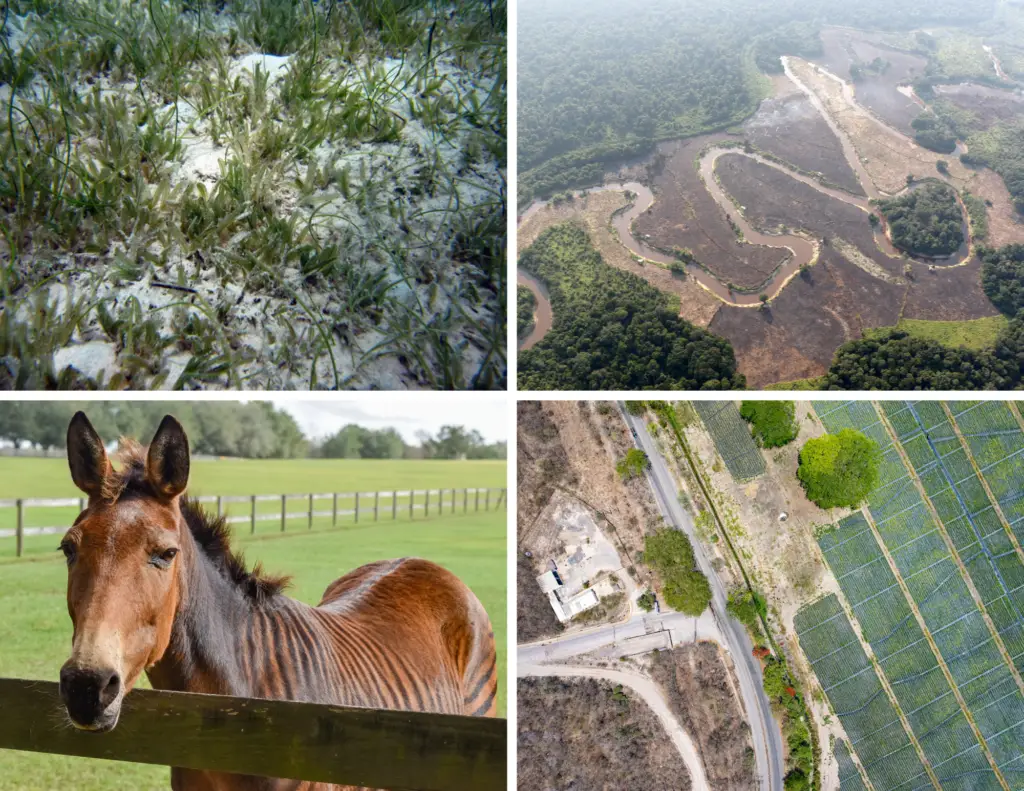
Understanding the primary threats to endangered species is crucial for developing effective conservation strategies. While many factors can contribute to species decline, some are more universally significant than others. This question helps clarify which factors are generally considered the most pressing concerns for endangered species conservation.
A) Invasive species
B) Habitat fragmentation
C) Genetic diversity
D) Overexploitation
Answer:
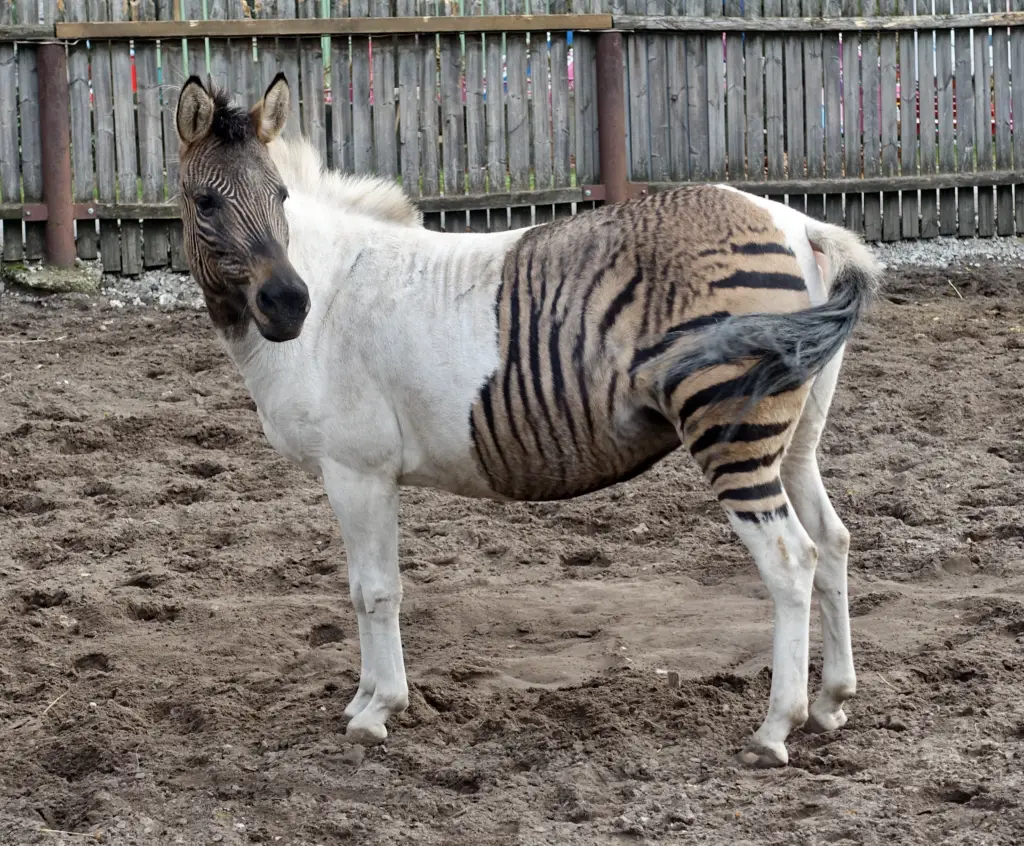
The correct answer is C) Genetic diversity. While low genetic diversity can be a concern for small populations, it is typically a consequence of other threats rather than a primary cause of endangerment.
Invasive species, habitat fragmentation, and overexploitation are all major direct threats to many endangered species. Invasive species can outcompete native species for resources or prey on them directly. Habitat fragmentation reduces the available living space for species and can isolate populations, leading to inbreeding. Overexploitation, through hunting, fishing, or collection, can rapidly deplete populations. In contrast, low genetic diversity usually becomes a significant issue only after a population has already been reduced by other factors. However, once a population is small, low genetic diversity can make it more vulnerable to disease and environmental changes, creating a potential “extinction vortex.”
15. Which international agreement aims to protect endangered species from international trade?
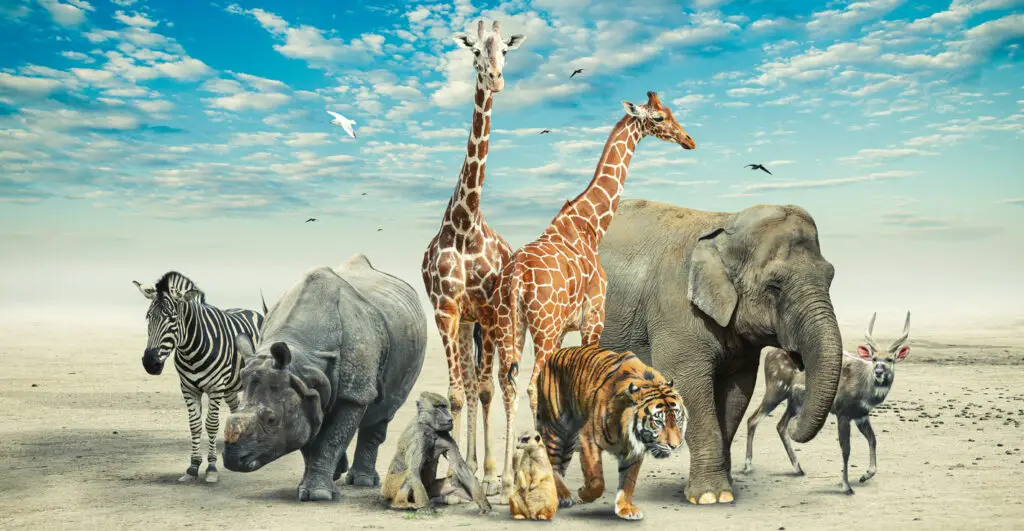
International cooperation is crucial for protecting endangered species, particularly from the threats posed by global trade. Several international agreements exist to address various aspects of conservation, but one, in particular, focuses on the specific issue of international trade in endangered species. This question tests knowledge of this important conservation tool.
A) Kyoto Protocol
B) Paris Agreement
C) CITES
D) Ram
Answer:
The correct answer is C) CITES. CITES stands for the Convention on International Trade in Endangered Species of Wild Fauna and Flora.
CITES is an international agreement between governments that aims to ensure that international trade in specimens of wild animals and plants does not threaten their survival. It was drafted in 1963 and entered into force in 1975. Today, it has 183 member countries (called Parties). CITES works by subjecting international trade in specimens of selected species to certain controls. These require that all import, export, re-export, and introduction from the sea of species covered by the Convention be authorized through a licensing system. The species covered by CITES are listed in three Appendices, according to the degree of protection they need. While CITES is legally binding on the Parties, it does not take the place of national laws, but rather provides a framework for countries to implement in their own legislation.
Conclusion
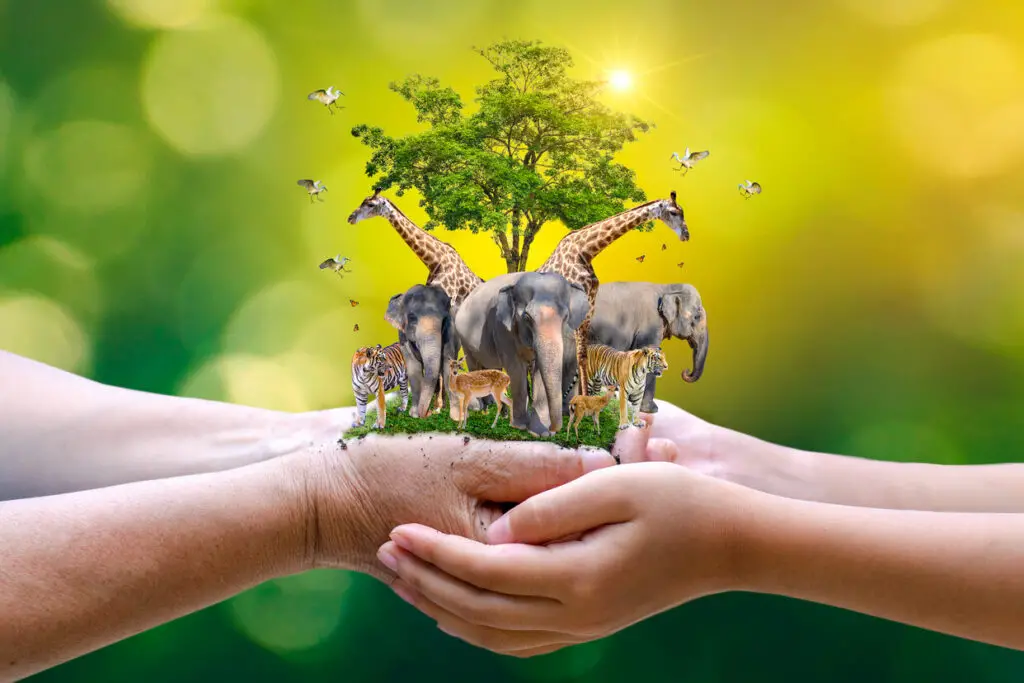
This endangered species quiz covers a range of topics, from specific endangered animals to broader conservation concepts and international efforts. It highlights the diverse threats facing wildlife today, including habitat loss, climate change, poaching, and unsustainable trade. The quiz also emphasizes the critical state of some species, like the northern white rhino and the vaquita, underscoring the urgency of conservation efforts.
- Many iconic species, such as tigers and elephants, are critically endangered.
- Human activities, particularly habitat destruction and overexploitation, are the primary drivers of species endangerment.
- Climate change is emerging as a major threat, especially for species like polar bears.
- Some species, like the Spix’s macaw, are already extinct in the wild and depend entirely on captive breeding for survival.
- International cooperation, through agreements like CITES, is crucial for addressing global threats to biodiversity.
Understanding these issues is the first step towards effective conservation. By raising awareness about endangered species and the challenges they face, we can hope to inspire action to protect the world’s biodiversity for future generations.


